Martha Canfield
Dos enfoques de Pedro Páramo (1989)
Link to the original text:
Link to Part II:
Martha Canfield: “Two perspectives of Pedro Páramo” (1989) (II)
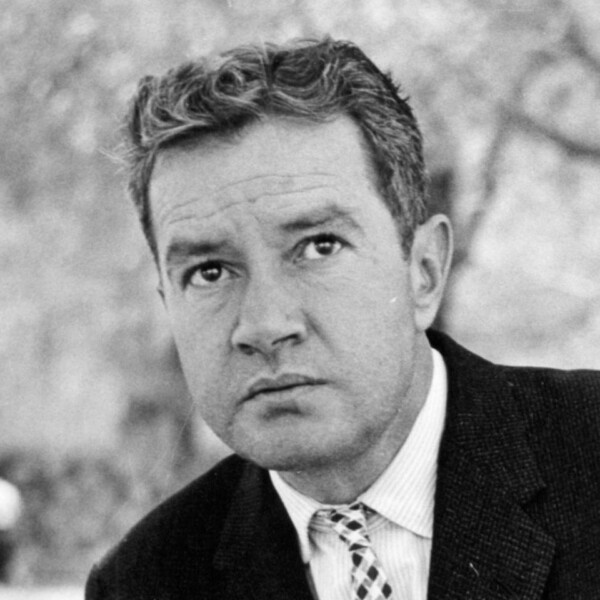
Juan Rulfo
Martha Canfield is an Uruguayan writer, poet, translator and professor who lives in Italy. She is a specialist in Hispanic literature, and her vast oeuvre includes literary analysis and criticism works, translations of Spanish-speaking authors into Italian and of Italian authors into Spanish, and many original poetry books, both in Spanish and in Italian. Such career has earned her multiple prizes and accolades; she is also a member of the Uruguayan Academy of Letters and a professor at the University of Florence, in Italy. A small but very beautiful example of her work is the poetry book Orillas como mares, which is well worth reading.
This fascinating analysis of Juan Rulfo’s masterpiece, Pedro Páramo, was originally published in Revista Iberoamericana, vol. LV, n. ° 148-149, julio-diciembre, 1989. I should note that, regarding the quotes taken from Pedro Páramo and Gabriel García Márquez’s El otoño del patriarca, I chose to give my own translations too. Having said that, the high quality of professor Canfield’s study and the fact that I found it so illuminating when trying to understand the amazing Pedro Páramo are reason enough to have wished to translate this text into English. My deep gratitude to Martha Canfield for her kindness in allowing me to publish here my translation of her work.
Two perspectives of Pedro Páramo
1. THE ARCHETYPE OF THE TERRIBLE FATHER IN RULFO AND GARCÍA MÁRQUEZ
Magical realism was the search for a narrative formula which might bring together the progressive discovery of American reality —geographical, historical, social, political— and the fascinating persistence of magic —myths, legends, popular beliefs, the universal structures of an imagination which interprets the world and prepares man for life’s constant vicissitudes, along with local variants of such collective archetypes or structures.
One of the most prevalent archetypes in Hispanic American literature, from the 19th century to our times, and not only in prose but also in poetry, is the archetype of the dictator, which is nothing but a debased version of the father-king heroic figure. That is to say, the figure upon which the son-people had placed its hope has betrayed such hope, turning out to be a despotic father, an evil hero and a tyrannical ruler. Augusto Roa Bastos’s and Gabriel García Márquez’s respective novels, Yo, el Supremo (1974) and El otoño del patriarca (1975) —the former, a tragic version; the latter, a satirical version—, show the clearest examples of a despotic figure combining the conflicting roles of the protective and the destructive father.
Somewhere else*, we have explained how the archetype of the terrible father, nurtured by the very history of Latin American countries, has engendered in literature the familiar figure of the beloved leader who, corrupted by power, becomes an abhorred despot. We have also tried to explain why we consider García Márquez’s Patriarch to be the greatest representation of such figure, and we have noted that the most important source for the Marquecian version is a novel predating it by twenty years, which García Márquez himself considers to be a pinnacle of Hispanic American narrative: Juan Rulfo’s Pedro Páramo.
Of course, the differences between both novels are not few; in the first place, Pedro Páramo is not a dictator, but a chief, a village lord. In the second place, Rulfo’s lyrical, monodiscoursive style contrasts with García Márquez’s pluridiscoursiveness —in the Bachtian sense— and the prevalent satirical-grotesque register in El otoño del patriarca. Furthermore, the authors’ narcissistic projection is diametrically opposed: Rulfo projects himself onto the figure of the son, while García Márquez does so onto the father-tyrant. For those who believe that nothing happens by chance in creative expression, it is certainly symptomatic that Pedro Páramo’s son represents the homodiegetic narrator for a substantial part of the story and that its name, Juan, is the same as the author’s. Regarding García Márquez, it seems quite evident that he is pleased to tell the moral and immoral feats of his character and, since he has stated that El otoño del patriarca is his most autobiographical novel, we should take him seriously; moreover, we must consider that the projection effected is probably deeper than he supposes.
The fact the Rulfo projects himself onto the son, not the father, is hardly surprising, if we consider his biography, on the one hand, and his Mexican nationality, on the other hand. Rulfo lost his father when he was eight years old and his mother when he was fourteen. Three of his grandparents had already died, and no relative looked after him; he ended up in an orphanage, where he spent many years. He held a lifelong passion for his origins: who were his grandparents, what were their surnames’ provenance, Vizcaíno, Arias…, how were his ancestors like, what did they do. For more than twenty years, he worked at the Indigenous Institute, a state department, and his work made him travel around far-removed places in Mexico, in search for the last Indian communities marginalised from civilisation, the little and scattered roots of its history (Harss, p. 311). The quest for the father is something Rulfo has experienced intimately.
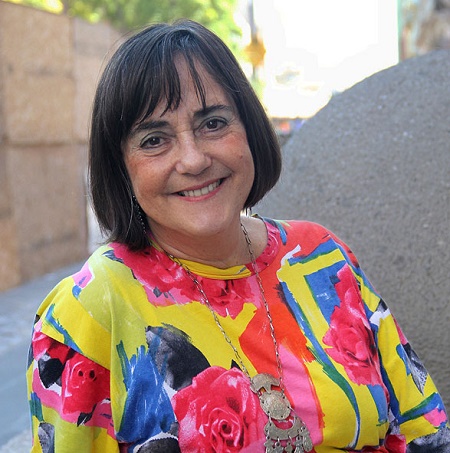
Martha Canfield
Then, as is well known, the paternal complex is deeply rooted in the Mexicans’ psychological structure; we may even say it is one of the staples of “Mexicanness”. At an unconscious level, the Mexican is always un hijo de la chingada, that is, a son of the raped, humiliated woman: to a much greater extent than the rest of the Hispanic Americans, the Mexican perceives himself as an offspring of the land ravaged and subjected by the Spanish conqueror. This problem has been chiefly explored by Octavio Paz in his El laberinto de la soledad (1950). Never mind that the “marriage” is presented as legitimate: Pedro Páramo and Dolores Preciado are officially married; but Juan Preciado deserves no better treatment from his father than the other Abundio Martínezes whose mothers “gave birth on a straw bed”. The Laws of the Indies, as is well known, were enacted to protect the new dominions and their inhabitants; but they were insufficient to prevent the plunder, the extermination of Indigenous cultures —if not of the very peoples—, the abuse of authority… In brief, all the perils derived from colonial submission. The people born out of humiliation —quite intensely, the Mexican people— cannot overcome the ancestral Oedipus complex, and it is incapable of averting the infant’s fatal distribution of erotic and death impulses towards the mother and the father, respectively. More than ever, then, literature plays a role of “purification”. The author as a narrator of tyrants is fundamentally the son pondering upon the historical failure of his people —with which he identifies—, and introjecting the horrendous father —a mixture of the original invader and the failed or treacherous ruler—, before expelling him through cathartic writing (Macrì, pp. 31-32). The 1910 Revolution and the rise of the new warlords, for its part, gave the impression that the father figure could be recovered by dignifying the relationship between land and nation. But the Revolution failed, and the reconciliation with the father was postponed once again. García Márquez, instead, mainly projects himself onto the father, that is, the Patriarch who in turn has solved his own paternal complex by strikingly eliminating the father figure: the Patriarch enjoys the full exercise of power and an undisputedly privileged relationship with the mother. The narrator says: “He thought that no one was a son of no one else but his mother’s and only hers” (OP, p. 50); and moreover, “he knew himself to be a man without a father, as the most illustrious despots in history” (OP, p. 51). And García Márquez says, referring to dictators in general and his novel in particular: “What I think I have established is that the dominant image in their lives was that of the mother, and that —by contrast— they had somehow always lacked a father” (Mendoza, p. 86).
However, in spite of these differences, the elements that relate Pedro Páramo to El otoño del patriarca are many and very important. The kind of magical realism so characteristic of García Márquez’s works —wherein the narrator takes part in the marvellous story without ever becoming detached from it, neither to comment upon it nor to explain it, and even less to wonder at the events— can only find a precedent in Rulfo’s oeuvre, and it is in good measure born out of the Mexican master’s lesson. The achronous space in Pedro Páramo, the suspension of time in a barren landscape where death stalls history, finds an equivalent in the dreamlike unreality of El otoño, in that environment of an ideal Caribbean where the season-less year, each month always the same, appears hyperbolised in a secular time which both runs and is detained. Time in El otoño, free from human coordinates, more properly resembles time in the divine mind, where everything is at once successive and simultaneous; or else, the a-chrony of cyclical myths, where everything happened and happens again, being at once dynamic —history elapses through centuries— and static —history bites its own tail, permanently returning to the moment of the Patriarch’s passing—. Both the Patriarch and Pedro Páramo are narrated from death: and this must necessarily be so, for the two are terrible fathers whose power becomes enhanced with their physical disappearance, after which —as Freud explained in his Totem and taboo— the son introjects them and imposes the law upon himself.
Additionally, the two novels overflow the narrative genre, bordering on prose poetry to such an extent that García Márquez has been accurately able to define his work as “a poem on the loneliness of power”; while Pedro Páramo has been praised for its lyrical nature, often being framed within a poetic (almost rather than a narratological) analysis. Carlos Domínguez, for example, has noted that our memories of this novel are perceptive, just like with a poem, and that, while reading, we are not unaware of the interstices through which the narration is structured like music between silence intervals or pauses (Domínguez, pp. 56-57).

Gabriel García Márquez
There are even certain narrative details in Pedro Páramo which are echoed in El otoño del patriarca; if not expressly desired —which seems unlikely—, they must be surely taken as evidence of a most profound reading which has left behind such marks, as well as of an indubitable and extraordinary affinity between both authors. Thus, the famous nocturnal ceremony of the Patriarch, by which he would not sleep unless he had previously checked the windows’ espagnolettes, covered the bird cages, shut each door in the multiple rooms and, finally, the door in his own bedroom, locking the three hasps, the three locks and the three latches, resembles —regardless of the formidable hyperbole, typical of García Márquez’s carnivalesque style— the women’s manic gestural repetition, each night, at the child Pedro Páramo’s house: “…they used to pray the end of the rosary. They got up; confined the birds; locked the door; turned off the light” (PP, p. 18).
Then, there is the peal of bells for the death of Susana San Juan, multiplied by the other churches in the zone and so persistent that the funeral becomes a feast: while evoking the famed leitmotiv of Agustín Yánez’s Al filo del agua (1947) and the tremendous effects produced by Gabriel, the bell-ringer, it also lays down the motive of the funeral-revelry, retaken by García Márquez in the “carnival for my death” which unleashes the fury of the Patriarch. In both cases, the paradoxical popular feast concludes with the mocked tyrant’s revenge: Pedro Páramo steps aside, and Comala starves. The Patriarch stages his own resurrection and regains his power to deal out, with viciousness and indulgence, punishments for the disloyal and rewards for the loyal.
But Pedro Páramo appears most evidently as a source for El otoño del patriarca in the framing of the protagonists: contrast between external impassivity and inner lyrical dimension; identification with the land; dependence on the feminine figure; utter loneliness; polygamy; multiple fatherhood; non-recognition of children, except for one who dies prematurely; etc.
With respect to Pedro Páramo, Carlos Blanco Aguinaga had already demonstrated the two sides of the character, the contrast between “the external violence and the inner slowness of dreams” (Aguinaga, p. 111). Actually, Pedro Páramo’s cool, calculated violence lies in the orders he gives, in imposing his will without any regard for anyone else’s feelings. His external gestures never seem violent; while, in the Patriarch, they are quite visible, with his anxious rounds through the palace, his pounding the table with his hand to suppress a plot, his very ruling “in a loud voice and physically present”, his impulsiveness, his outbursts; in short, his “barbarism”. Pedro Páramo, exercising violence but never getting carried away externally, is best defined by another adjective: impassive; an adjective which is likewise well suited to the Patriarch, not in his version of chief, but of tyrant, as shown by the myriad epithets given by the narrator —“granitic”, “unfathomable”, “stone-like”, “inscrutable”, etc.—. These words suggest the character’s stony configuration, just as in Pedro Páramo, although in the latter it is made explicit only in the last line of the novel, but certainly with an indelible image and retroactive value. So is his agony described: “He fell on the ground with a thud and crumbled as if made of stone” (PP, p. 118).
This external impassibility is complemented by an inner world of dreaminess and transportation —constant in Pedro Páramo and very frequent in the Patriarch—, in both cases narratively solved by means of interior monologues focused on the lost beloved woman. In Rulfo’s novel, the lyrical, monodiscoursive style keeps the secret musings of its character on the same linguistic register:
…Thousands of metres away, above every cloud, far, very far beyond everything, you are hidden, Susana. Hidden in God’s immensity, behind his Divine Providence, where I can neither reach you nor see you and where my words cannot go (PP, p. 16).
And it is always so, even shortly before dying:
…There was a large moon amid the world. My eyes became lost looking at you. The moonbeams filtering over your face. I never grew tired of regarding that apparition which was you. Soft, rubbed with moon; your mouth puffed, moistened, iridescent with stars; your body becoming transparent in the water of the night. Susana, Susana San Juan (PP, p. 117).
Like two sides of the same coin, intense thought is offset by verbal laconicism. “What are you doing here?”, his mother asks him when he comes out of the toilet after a long time, and he answers: “I am thinking” (PP, p. 15). “And what were you doing?”, asks his grandmother, who has been anxiously looking for him during a storm; and he answers: “I was just looking at the rain” (PP, p. 16).
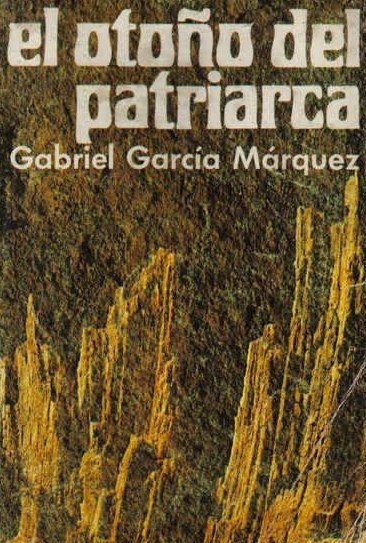
The heightened representation of the dialogical principle in García Márquez’s novel, for its part, that remarkable “pluridiscoursiveness” or “polyphony” (Bachtin, pp. 112-120; Ponzio, p. 122) so characteristic of El otoño del patriarca (Canfield, pp. 47-61), naturally produces monologues or first-person speeches which undergo changes of tone or register. For instance, in the ruling elder’s soliloquies, Manuela Sánchez is alternatively the subject of half-hearted evocations and terrible imprecations: “Where could you be, Manuela Sánchez, my misfortune, when I seek you and I do not find you in the unfortunate night of your eclipse, where could your gruelling hand be, where your rose […] and the liquorice breath of your respiration?”, asks the Patriarch, feeling “lonelier than ever in the eternal loneliness of this world without you, my queen” (OP, p. 86). And shortly after: “Where could you be, Manuela Sánchez, my awful spittle, damn it, where have you gone out of reach of my disastrous vengeance” (OP, p. 103). Similarly, regarding the phenomenon of hybridisation in the novel (which we have discussed somewhere else), the Patriarch’s melancholic ubi sunt, obvious references to a lofty literature, become insensitively transformed into speeches directly based on models from popular literature or paraliterature, or even on hit songs, using terms or syntagms of an informal, local Barranquillero and Caribbean, or even vulgar extraction:
Where could the liquorice smell of your respiration be in this continuous thunder of fucking loudspeakers you plague of my life of drunkards kicked out of slaughtersaloons, where could you have become lost among the endless binge of intoxicating maranguango and burundanga and mullein and smoking joint filters and massive sausages and a single-coin tip in a perpetual delirium at the mythical paradise of the Negro Adán and Juancito Trucupey (OP, pp. 75-76).
However, despite this stark difference in style, both tyrants leave the reader with the same impression of an unfathomable, stony appearance, hiding a continuous pain born out of love and desolation which has never been confessed to anyone. Just like Susana San Juan for Pedro Páramo, the focus of the Patriarch’s monologues are always the beloved women he has lost: Manuela Sánchez, Bendición Alvarado, Leticia Nazareno. This dual, contrasting nature of the Patriarch is perfectly illustrated by the beautiful homodiegetic account (in this case, it is not exactly a monologue) before the urn of his mother, followed by the heterodiegetic narrator’s description of its outer aspect. Although the quotation is long, it is well worth including:
With my own hands, mother, I uncovered the crystal urn whose funerary emblems fell apart with a mere breath, I took the crown of orange blossoms out of the mouldy skull whose wire hairs like a filly’s mane had been rooted out strand by strand to be sold as relics, I pulled you from among the filaments of worn-out bride stuff and the arid wastes and the difficult dusks of the saltpetre of death and you barely weighted more than a pumpkin under the sun and you had an old smell like the bottom of a chest and I could feel inside you a feverish unease which seemed like the murmur of your soul and it was the threshing of the moths which consumed you from inside, your limbs fell apart by themselves when I tried to hold you in my arms because your bowels had been emptied of everything which supported your living body of a happy mother sleeping with your hand over your heart and you had been restuffed with esparto so that nothing of what had been yours remained but a shell of dusty pastries which crumbled just by lifting it in the phosphorescent air of the fireflies of your bones and as soon as the glass eyes sounded like jumping fleas on the slabs of the crepuscular church, it became nothing, it was a trail of demolished mother debris which the bailiffs picked from the floor with a shovel to cast them again in the coffin somehow before the monolithic composure of the indecipherable satrap whose iguana eyes did not reveal the slightest trace of emotion (OP, pp. 157-158, with the italics, we chose to highlight the passage —actually gradual and not abrupt— from the homodiegetic to the heterodiegetic narrator).
Pedro Páramo takes the secret of his musings to the grave. So does the Patriarch. Their respective authors have actually gone to uncover those tombs. And the task could not have been easy. Narrating the tyrants from death also means untangling them from a common fossilised view, spread by history and literature. Carlos Fuentes said that, with this novel, Rulfo closed the documentary theme of the Revolution with a golden key, once and for all. But in fact, that “golden key” was missing a piece: La muerte de Artemio Cruz, published by Fuentes himself in 1962. However, in another sense, it is true that, after Rulfo, the documentary novel on the Revolution is no longer conceivable, because it had already ceased to be so with Pedro Páramo.
For its part, El otoño del patriarca has closed —also with a golden key and most extraordinarily, in our opinion— the dictator novel, whether about historical or emblematic figures (in the line of Asturias, Roa Bastos, etc.; and of Carpentier, García Márquez, respectively). Indeed, in the last ten years, despite the production of a prolific testimonial literature and the existence of real-life characters who have reinvigorated the archetype of the warlord and the tyrant —Perón, Pinochet, Videla, for instance—, narrative fiction tackles the theme of dictatorship, not of the dictator, through excellent novels such as No habrá más penas ni olvido (1978) and Cuarteles de invierno (1980), by Osvaldo Soriano; Mascaró, el cazador americano (1981) by Haroldo Conti; Conversación al sur (1981) and En cualquier lugar (1984) by Marta Traba; or Últimos días de William Shakespeare (1984) by Vlady Kociancich, among others. What we get is the oppressive atmosphere of military governments, although not from the point of view of the oppressor, but of the oppressed who desperately seeks a way to escape.
The dictator novel had its beginnings more than a hundred years ago with a narrative set which had the Argentine Rosas as its centre or target. It comprised a story, Esteban Echeverría’s El matadero, written between 1838 and 1840 but not published until 1871; a fictionalised biography, Domingo F. Sarmiento’s Facundo (1845) (Sarmiento also judged Rosas through Facundo); and a novel, José Mármol’s Amalia (1851). Although Sarmiento had set the example of what was it like to “see” the tyrant from the inside, none of the later writers took the lesson, or did so only partially, instead preferring the decrying model of Echeverría—Mármol.
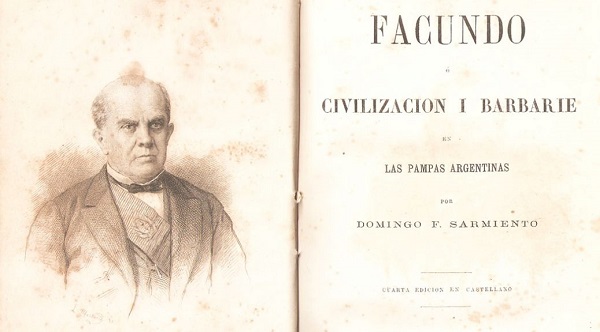
In order to untie the tyrant from the prevailing Manichaeist view —which amazingly persists even in Carpentier himself—, it was necessary, instead, to repeat (at least partially) that kind of identification which Sarmiento, the Montonero Doctor, had effected with Facundo, and which García Márquez would later effect with his Patriarch. Or, in any case, it was essential to render that “inner aspect” through which the despot is more plausibly materialised: this is Rulfo’s achievement in Pedro Páramo.
In other words, it was necessary to overcome the abyss from whose opposite sides people and tyrant looked at —but recognised not— each other. In Hora 0 (1960), Ernesto Cardenal has Somoza speak only in English, because for him Somoza shares no common ground with the people of Nicaragua, not even their language. Indeed, there is no quarter in this war. Nicaragua is Sandino; never Somoza. There is a single alternative, and reconciliation is naturally impossible: either with Sandino for Nicaragua or with Somoza against Nicaragua. Notwithstanding that in historical strategy and in certain circumstances such alternative may turn out to be unchangeable, between people and tyrant there is a de facto relationship, and therefore the links between them must exist. Denying so would mean, from an analytic perspective, denying that part of the self which the victim has projected onto its aggressor. It would mean to ignore a part of that self-identity which the people, in this case, rejects and fights off in the tyrant. We cannot say —and indeed it is not our intention to elucidate here— how Nicaraguan was Somoza. What is important, instead, is to make clear that the intuition of some writers has uncovered this hidden identification between the tyrant and his people. Whoever does not feel that Pedro Páramo is as proper to Comala —to Mexico— as Juan Preciado is, and that, had his fate been otherwise, Juan Preciado, like Miguel Páramo, could too have been a Pedro Páramo? Who doubts that García Márquez’s Patriarch is engendered by the very people he oppresses and which he, in turn, feels he has engendered? What the Patriarch says about his military could also be said about the villagers, each of whom he knows personally, along with their name, surname, trade and relatives: “I, who gave birth to you all, damn it, I took you from my ribs” (OP, p. 116).
The tyrant is engendered by the people, just like he and the people are engendered by the land. Facundo could not have existed anywhere but in the Argentine pampa, according to Sarmiento: the pampa produces him. In the poetic metaphor of El otoño del patriarca, the huge, secular body of the old ruler encapsulates the sea land of the Caribbean: his skin is host to lichens and sea-bottom parasites (OP, pp. 10, 89, 169). Hence, the hated tyrant (father) and the beloved land (mother) comprise a unity; in the Mexican version, the “Rapist” and the chingada. The conclusion may prove to be so disconcerting and distressing that the people (the son) might step back in horror. The revelation may even strike down those who are not prepared for it: Juan Preciado was not prepared, so his journey ends in the irreversible grave.
A novel such as El recurso del método says precisely what the tormented people wants to hear; it works at the conscious level, a level which spoils and pleases. It does not unravel, it is not cathartic. Its satirical element fosters relief, yes, but nothing more. The self-son-people, who has execrated and exorcised the father-dictator by rejecting the material dismissed in the unconscious —which, from another perspective, would represent a treasure—, uses satire to seek relief and justify the split. Satire has this function too in El otoño del patriarca; but there is something more here. Among this novel’s many surprising elements, one of the most unexpected is the change of narrative focus taking place in the last pages, after the protagonist’s death. The reader feels at once confusion and joy: the narrating voice is the people’s, but for the first time it is not a subdued, confounded or hesitant conscience, but a lucid conscience which sees the dictator as a defeated enemy and understands why he has been defeated. There is a total split between subject and object. The people is no longer projected onto the tyrant and can judge him freely. Compare the attitude of the narrator in these meaningful quotes from the macrotext:
that […] he was the same Messianic man who in the beginnings of his regime appeared in each village at the most unexpected hours (OP, p. 90),
he remained […] attentive to the course of our lives, for the only thing which made us feel sure about the land was the certainty that he was there, invulnerable (p. 106),
a fatherland which was then as everything before him, vast and uncertain (p. 173),
with the final attitude: from “it is too late when one learns that even the lengthiest and most useful lives are barely enough to learn to live” until the last line, where it is stated that “the unmeasurable time of eternity had at last come to an end”, an esoteric phrase on the passage from the non-time of myth and childhood fantasy to the measurable time of history and adult awareness.
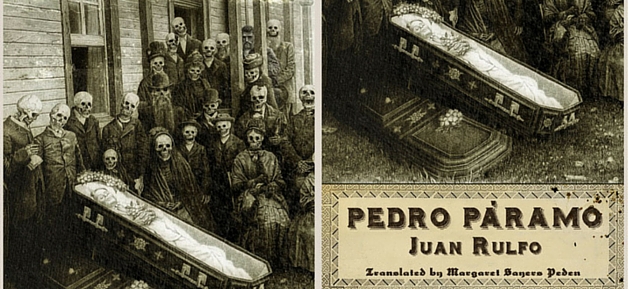
The objective distance taken from the Patriarch is quite evident in phrases such as:
the life we saw from this side which was not yours my general
an old man without destiny whom we never knew a mocking tyrant who never knew up from down in this life we loved
because we knew who we were while he never got to know it (pp. 270-271).
It is no accident that the reader gets to read such a sentence only at the end of the novel. Throughout the narration, the author has subtly induced the reader to acknowledge that part of himself which was in the father-tyrant, and thus, to reconcile with his own dark side, hitherto projected onto the other. After that, it is possible to strip the tyrant of his symbolic value as father and judge him, firmly and without hate, so as to leave the way open to reconstruction or, in mythical-analytical terms, to a “rebirth”. In this sense, reading El otoño del patriarca, even more than writing it, is genuinely cathartic. Mercy and horror for the “solitary beast”, and at last the composed judgement of someone who, after turning the terrible page, can start all over again.
Pedro Páramo too has a cathartic effect on the reader, even though it tells the story of an unsolved father complex and although the conflict between father and son ends negatively, with the son’s annihilation. This is because Pedro Páramo implicitly presents the reader with the elements needed to overcome it: mercy and horror for the old chief, and especially identification of the chief with the land under his dominion. The chingada and the overbearing male who has subjected her are nothing but two aspects of a single unity.
After reading Rulfo’s novel, few things are as evident as the close relationship between Pedro Páramo and Comala: the latter lives and dies at his will, and all of its inhabitants, who depend on him when alive, keep revolving around his figure after their death, whether in the murmurs which remain as indelible marks in the air of the ghost town, or in the afterlife dialogues who still have the old chief as their guiding thread.
Reconciling with the father implies, in fact, the surprising revelation we had mentioned before: father and mother, dictator and land, the denied and the acknowledged aspects of the self are nothing but mutual reflections which comprise an essential unity. When the son sees and understands, he accepts the death of what he has been until now and is ready to be reborn in his new character. According to mythography, the hero who has descended into Hell surfaces again together with the gift —object or message— he earned, with which he shall renew and improve his and his people’s lives (Prometheus with fire, Jason with the Golden Fleece, the eternal resurrection of Christ). If, however, the hero does not obtain what he was looking for, or he does so but wishes not to return or just cannot return, the renewal —rebirth or palingenesis— is impossible. For he who does not return is someone who does not resign himself to lose that personal part which must be lost: it is Orpheus looking back to ascertain that Eurydice is following him. He who does not submit to the continuous cycle of death and resurrection which is life, far from avoiding death, loses life itself.
He who is incapable of denying himself, acknowledging in the hated-other that part of the self he despises, does not know himself and cannot overcome himself or grow. Juan Preciado, who does not recognise himself in his father, who remains obscure to himself and perishes in his own confusion, is the very Mexico which does not recognise itself in its own history and thus cannot progress. “In Mexico we have reached a stalemate”, Rulfo said (Harss, p. 312). Forgetting the past —in national as well as individual history—, erasing a part of what we are or of what we were, not realising the process of integrating the opposites, can yield but a temporary balance. Killing the father-ogre is not liberating if one remains separate from the father’s ogre-aspect; however, identifying only with the latter means giving pre-eminence to the self’s dark side and being suffocated by it.
In Rulfo’s novel, there are actually three sons, each of them following a different line of conduct with regard to the father. Juan Preciado, who avoids the confrontation, attempts to flee, i.e., to forget or to evade: the disastrous consequences represent a key theme in the novel. Abundio Martínez kills the father, but not lucidly: his drunkenness has symbolic value too. He does not recognise that part of himself which lives in the father, and so his act is not liberating: his soul is bound to keep roaming the surroundings of Comala, brooding over that “ardent bitterness” which, being mostly his, he seems to recognise only in Pedro Páramo (PP, p. 9). Miguel Páramo is identified with his father’s negative side, exclusively embracing this part which subjects him and, at last, destroys him. Pedro Páramo’s sexual appetite, authoritarianism and unscrupulousness are reflected in his son Miguel, but without the counterbalance of that cold, calculating capacity which makes of Pedro Páramo a great chief and not a mere viveur. The runaway horse which leads Miguel into his premature death is a clear representation of debauchery, particularly sexual debauchery.
In García Márquez’s novel, the son actually kills the father because he sees that side of himself which is in the father, assumes it, reincorporates it into his personality —after having evaded it—, and finally renounces it. He lets it die for the new part to be born: just like infancy is let die to enter puberty, just like puberty is let die to enter adult age, etc. In Rulfo’s novel, no one is truly successful in killing the father; but the author teaches us thereby that the growth of the son is disrupted, and historical time, suspended. In this intuition of the authors —castrating relationship with the terrible father—, both novels seem to be closely related; from this point on, however, they also become separate. A reading with a special focus on the fulfilment of the hero monomyth in Juan Preciado’s adventure shall make clear this point.
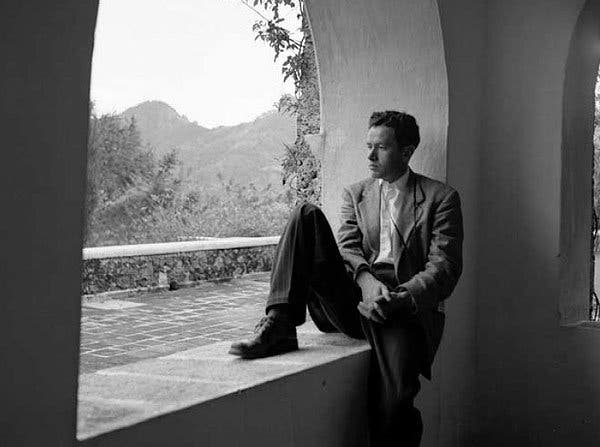
[*] The first part of this essay develops an idea sketched in the article “El patriarca de García Márquez, padre, poeta y tirano”, in Revista Iberoamericana, n. 128-129, July-December 1984, pp. 1017-1056, included and expanded in our book El “patriarca” de García Márquez, arquetipo literario del dictador hispanoamericano, (Firenze: Opus Libri, 1984); and especially the last chapter in this volume, “Recapitulación y significado del arquetipo”. The citations in this essay correspond to such volume; both for this and for other cited texts, we have simply detailed in parenthesis the author’s surname and the page(s) of the editions specified below.
For the two compared novels, we have used the following editions: Juan Rulfo, Pedro Páramo (1955), in Pedro Páramo y El llano en llamas, (Barcelona: Plantea, 8 ed., 1980, pp. 5-118); Gabriel García Márquez, El otoño del patriarca, (Buenos Aires: Sudamericana, 1975). In the citations we have used the acronyms PP and OP, respectively.
We have also consulted: Michail Bachtin, Estetica e romanzo, (Torino: Einaudi, 1979); Guiseppc Bellini, “Realtà e irrealtà in Pedro Páramo”, in II labirinto mágico, (Milano, 1973); Carlos Blanco Aguinaga, “Realidad y estilo de Juan Rulfo”, in Nueva novela latinoamericana 1, compiled by Jorge Laforgue (Buenos Aires: Paidós, 1969, pp. 85-113); Joseph Campell, L’eroe dai mille volati (1953) (Milano: Feltrinelli, 1984); Carlos Domínguez Puente, “La estructura del silencio y Pedro Páramo de Juan Rulfo”, in Cuadernos para la investigación de la literatura hispánica, n. 2-3, Madrid, 1980, pp. 5560; Carlos Fuentes, La nueva novela hispanoamericana, (México: Joaquín Mortiz, 1969; esp. pp. 15-16); Luis Harss, “Juan Rulfo o la pena sin nombre”, in Los nuestros, Buenos Aires: Sudamericana, 5 ed., 1973, pp. 301-337; Oreste Macrí, “II potere della narrativa”, in Industria e sindicato, n. 40-41,4-11 Nov. 1983, pp. 31-32; Plinio Apuleyo Mendoza, El olor de la guayaba. Conversaciones con Gabriel García Márquez (Bogotá: La Oveja Negra, 1982); Julio Ortega, “Pedro Páramo”, in La contemplación y la fiesta, (Caracas: Monte Avila, 1969, pp. 17-30); Augusto Ponzio, Michail Bachtin, alle origini della semiotica sovietica (Bari: Dedalo, 1980); Dario Puccini, “Quattro proposte di lettura del Pedro Páramo di Juan Rulfo”, in Terra America, by Angelo Morino (Torino: La Rosa, 1979, pp. 155-171); Hugo Rodríguez-Alcalá, El arte de Juan Rulfo, (México: Instituto Nacional de Bellas Artes, Dept. de Literatura, 1965); Moustapha Safouan, Studi sull’Edipo, (Milano: Garzanti, 1977); Joseph Sommers, “A través de la ventana de la sepultura: Juan Rulfo”, in Yáñez, Rulfo, Fuentes (Caracas: Monte Avila, 1970, pp. 93-123).
We would like to express our affectionate debt to Oreste Macrì, whose very special case goes far beyond what bibliographical citations may say.


Leave A Comment